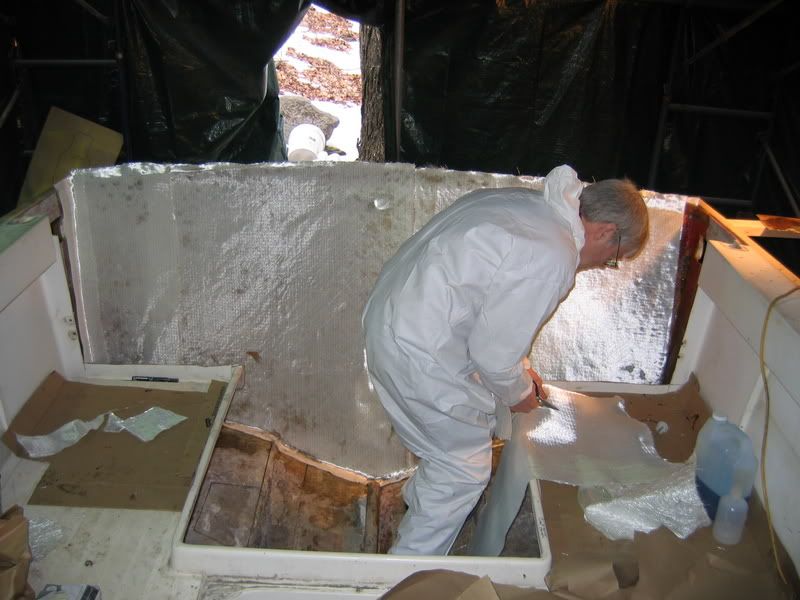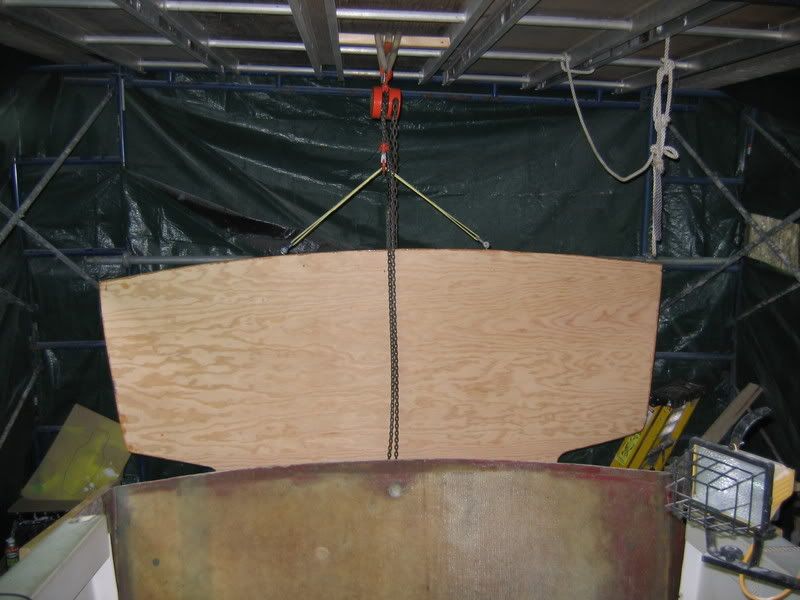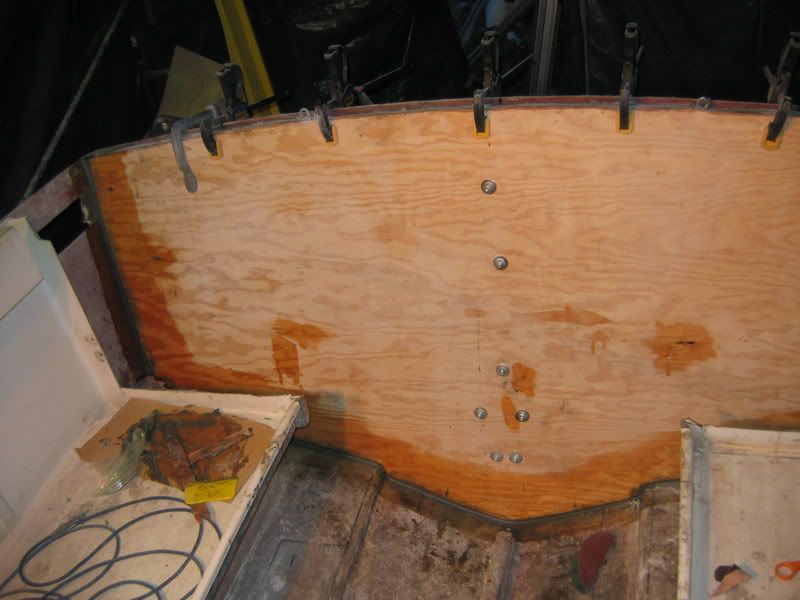Quote:
Originally Posted by Bushwacker

Drill some holes in coosa to allow cabosil to ooze out; use bolts/screws through existing transom skin to pull coosa up against inside skin. I'd install a layer or two of 1708 against inside skin, wrapped around 6-12" into hull sides and bottom and then try to install the cabosil/coosa while the 1708 is still tacky to get a good chemical bond. Get a couple guys to help with mixing resin and laying glass; refrigerate resin to maximize working time. And I'd use epoxy resin or at least vinyl ester resin for maximum bond strength.
|
That's how I did the transom on my Tsunami,although I used marine plywood.We laid up two layers of 1708 on the inside face of the outer transom skin with vinylester(no wax),and then troweled on a layer of thickened resin to a putty (thickened with milled fiber & cabosil) on to both the transom face,and plywood.
We pulled it all together with bolts,and clamps.
I did this in late Feburary cold winter day,but it turned out to be a benefit,as the cold prevented the resin and putty from kickin too fast,giving us ample time to get it all in place..
I then turned up the heat,and got it warm for several hours.I tried to use bolts in areas wher I was going to cut out the plywood like the hole for the outdrive,and the holes wher the lifting transom eyes were,so that Id have less holes to fill later on.
After the transom was in, I applied more layers of 1708 on the face of it overlapping it several inches in to the hull.
I only used Epoxy to glue the two layers of 3/4" plywood together.Everything else was done with vinylester and polyester resins.
I think I put a bit too much putty on it,but its been six years now,and (knock on wood)its still solid as a rock.
Good luck with your project



